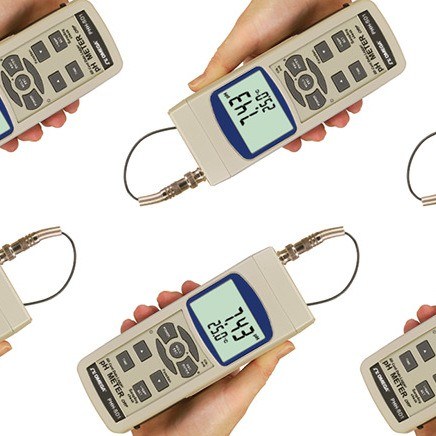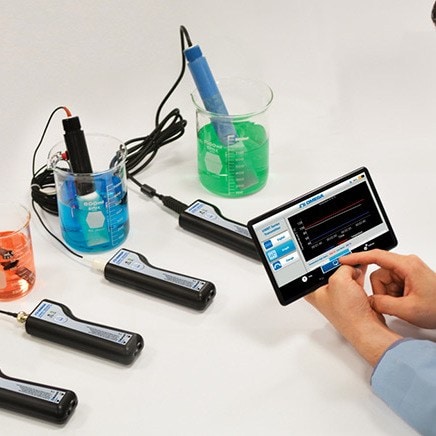Dissolved Oxygen (DO) and pH are two fundamental factors that influence water quality and play critical roles in a wide range of applications. DO refers to the concentration of oxygen gas (O₂) dissolved in water, essential for supporting aquatic life and maintaining healthy ecosystems. Meanwhile, pH measures how acidic or alkaline a solution is, on a scale from 0 to 14, with 7 representing neutrality.
Together, these parameters are indispensable in industries such as water treatment, chemical processing, and environmental monitoring. Imbalances in DO and pH levels can lead to significant challenges, from algal blooms in natural environments to equipment corrosion in industrial systems. By understanding the principles and significance of DO and pH measurement, engineers and learners can ensure the optimal performance of processes while maintaining the delicate balance essential for sustainable operations.
Understanding Measurement Techniques
Different measurement techniques cater to specific needs. DO measurement employs two primary technologies: electrochemical sensors and optical sensors. Electrochemical sensors, such as galvanic and polarographic types, rely on chemical reactions to measure oxygen levels and are widely used in field applications due to their reliability. Optical sensors, which use light to detect dissolved oxygen, offer superior accuracy and minimal maintenance requirements, making them suitable for laboratory use.
Discover Our Precision-Engineered Test & Inspection Tools
For pH measurement, glass electrode sensors dominate in precision laboratories, while durable, solid-state sensors like Ion-sensitive Field-effect Transistor (ISFET) probes are preferred in harsh conditions. Engineers benefit from understanding the principles behind these tools to select the best-fit solution for their requirements, balancing factors like sensitivity, durability, and ease of calibration.
Calibration and Maintenance
Proper calibration and maintenance are crucial for accurate DO and pH measurements. Calibration involves creating reliable reference points:
- DO Sensors require calibration against zero-oxygen and saturated air-water solutions to ensure accuracy.
- pH Sensors must be calibrated using at least two buffer solutions, such as pH 4.0 and pH 7.0.

Maintenance of sensors extends their usability and ensures reliability. Regular cleaning with non-abrasive materials helps prevent fouling or biofilm buildup that can interfere with results. Storing electrodes in the appropriate solutions and recalibrating regularly—especially before critical measurements—further enhances reliability. When issues like drift or slow response times occur, following troubleshooting steps is essential for maintaining operational efficiency.
Environmental and Application Considerations
Environmental factors significantly influence DO and pH readings. For instance, temperature impacts oxygen solubility; higher temperatures reduce DO concentrations. Similarly, salinity and pressure require adjustments or specific compensations during measurement. Recognizing these influences helps in selecting suitable measurement techniques and interpreting data accurately.
In application-specific contexts:
- In aquaculture, DO levels directly affect fish health and metabolic rates.
- In industrial processes, maintaining stable pH prevents equipment corrosion and ensures consistent reactions.
- In wastewater treatment, both pH and DO levels are controlled to optimize microbial activity for efficient pollutant breakdown.

For every setting, tailored monitoring strategies are necessary to address unique environmental and operational challenges.
Safety and Handling Information
Engineers and operators should prioritize safety when handling certain probes, especially those made with toxic materials like thallium. Exposure to hazardous components can pose health risks through contact, inhalation, or ingestion. Proper storage, disposal according to regulatory standards, and using personal protective equipment (e.g., gloves and goggles) minimize risks. Moreover, ensuring compliance with standards like ISO or EPA regulations reinforces safe and effective practices in measurement and disposal.
Empowering Engineers
To effectively monitor and manage DO and pH levels, professionals must combine knowledge of measurement principles, calibration practices, and application-specific insights. With advancements in technology, modern instruments provide enhanced accuracy and ease of use. Whether applied to environmental conservation, industrial optimization, or research endeavors, understanding these fundamentals empowers engineers and enthusiasts alike to maintain balance in systems that rely on critical chemical measurements.
This structured approach ensures that readers gain not only technical expertise but also practical insights to effectively apply these principles in their respective fields.

